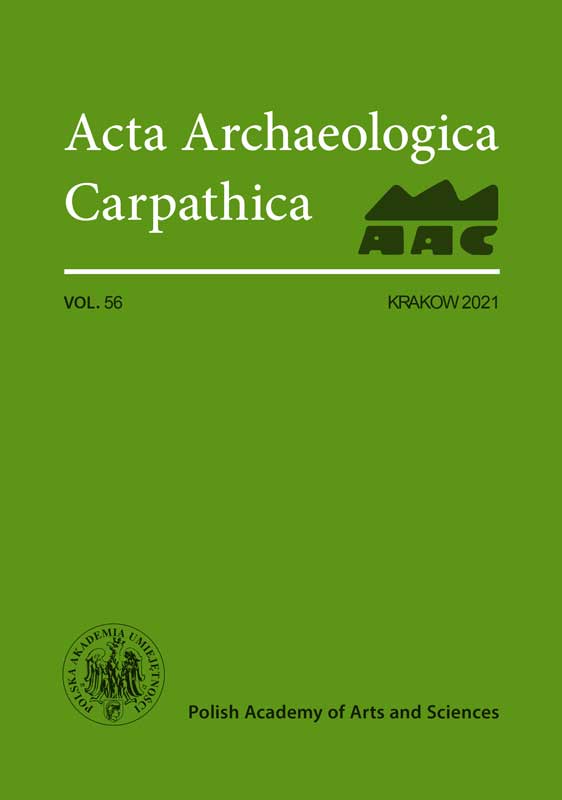Settlements of Local Phase of Corded Ware culture in Moravia
Settlements of Local Phase of Corded Ware culture in Moravia
Author(s): Jaroslav Peška, Pavel Fojtík, Miroslav DaňhelSubject(s): History, Archaeology, Prehistory
Published by: Wydawnictwo Uniwersytetu Jagiellońskiego
Keywords: Corded Ware culture (CWC); Moravian Group of Corded Ware culture (MCWC); settlement of local phase; ceramics; daub wattle destruction; kiln?; absolute dating
Summary/Abstract: In the context of the long discussion on the (non-)existence of permanent Corded Ware culture (CWC) settlements and the semi-nomadic way of life of their inhabitants, ongoing excavations of common settlements have newly gained immense significance, as in almost all other regions, also in Moravia (Olomouc-Slavonín, Horní lán; Vřesovice; Seloutky; Hulín-Pravčice 1; Prostějov, Za tržištěm). Earlier sporadic indications have been joined by a series of records of settlements with sunken features and typical local ceramics identical with burial grounds, together with which they formed complete settlement areas in a number of sites. Light wattle structures, wells(?), textile production, animal husbandry, etc., have been identified, as were some very unconventional inhumation burials in pits (Olomouc-Slavonín, two cases). The cord element clearly formed a part of the mixed horizon of Strachotín-Držovice with elements of Makó/Kosihy-Čaka culture, Globular Amphora culture and Moravian Group of CWC. Absolute dating indicated the 26th–23rd century cal. BC. Absence of foundations of (residential) structures could be explained by the lower level of recognisability of CWC settlements. In other aspects, it showed no particular difference from other prehistoric farmers and cattle breeders.
Journal: Acta Archaeologica Carpathica
- Issue Year: 2021
- Issue No: 56
- Page Range: 193-220
- Page Count: 27
- Language: English

